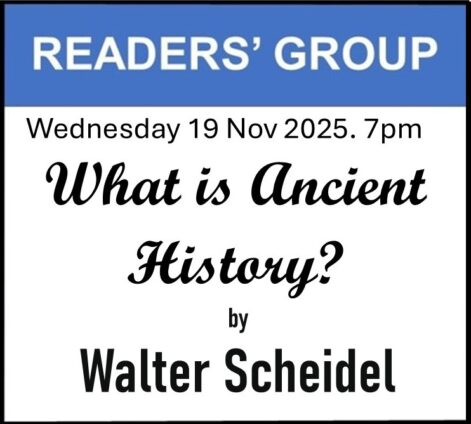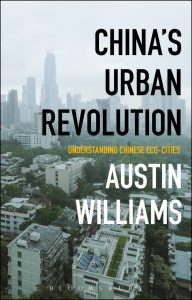Defining Art, Creating the Canon: Artistic Value in an Era of Doubt by Paul Crowther
Review by Harley Richardson
This is easily the best book I’ve ever read on art and music. It articulates why art is important and places the imagination at the centre of, not only art, but the whole of human existence. It also provides some criteria for making aesthetic judgements which make sense to me and which cut through the old dead-end discussions about High Art vs Low Art.
Crowther is a Professor of Philosophy who specialises in aesthetics and visual culture. The “Era of Doubt” he refers to in the book’s subtitle is the era we now live in: one in which casts doubt on the authority and value of many of our institutions, not least the western cultural canon and those who attempt to uphold it. Shakespeare, Mozart, Rembrandt – all “dead white males” – who represent a narrow colonial outlook which excludes non-whites and women. Hence the seriousness with which people are demanding that we “decolonise the curriculum” taught in schools and universities.
In the “Era of Doubt“, according to Crowther, relativism rules and there’s no such thing as truth. What matters is what’s true to you or me. The idea that it is possible to judge what is objectively good or bad has long been out of fashion. Consequently, many people feel nervous about making judgements at least in public, and the phrase “don’t judge me!”, formerly taken to be an expression of teenage immaturity, has been recast as a valid defence against a perceived attack on one’s personal identity.
For many in the art world, the absence of judgement is one of its strengths: the inclusivity, the freedom, the therapeutic qualities of making something without worrying what anyone will think of it. But this does turn art into a one-sided activity, in which what’s in the artist’s mind is all that matters, and what an audience might make of it is not really considered.
This was brought home to me a few years ago when I attended a seminar about community art projects. The panel of art workers told us about the self-esteem, personal wellbeing and community spirit that had been generated by the projects. It struck me that they were talking everything except the art. When I asked why that was, the audience turned on me (in an admittedly mild-mannered fashion). I was accused of being an elitist.
 Where does this anti-judgemental view of art leave “the public”? If it doesn’t matter whether the work created is any good or not, it begs the question – why should anyone else pay any attention to it? It is evident that the proliferation of community arts projects has not been matched by public interest in the results. Conversely, huge numbers of people still flock to the big art shows by those damnable Dead White Men.
Where does this anti-judgemental view of art leave “the public”? If it doesn’t matter whether the work created is any good or not, it begs the question – why should anyone else pay any attention to it? It is evident that the proliferation of community arts projects has not been matched by public interest in the results. Conversely, huge numbers of people still flock to the big art shows by those damnable Dead White Men.
There is clearly a disconnection between the art that most people value, and the increasingly insular world of those people who make it. Bridging that gap might be possible if there is substance to the art and attempts are made to win people over to it. But that’s not going to happen without making judgements about what is worth supporting and what should be passed over.
Crowther is unhappy with this state of affairs and believes that art is important and that making aesthetic judgements about art is both possible and necessary. He begins by taking on relativism, making an interesting case (which I don’t have space to go into here) that it is a form of inverted racism and also that it treats artworks as consumerist products. (If you want that explained, read the book). He then moves on to assess the two most prevalent explanations about how aesthetics work: the “designation” and the “formalist” theories.
The “designation” approach, which he traces back to Duchamp’s ready-mades, states that whatever an artist, or a member of the art establishment says is art, is art. This has the advantage that it greatly expands the possibilities of art, but it also leads to an arbitrary relationship between the idea in the artist’s head and the physical artwork, one in which art objects are “mere exemplars of theory”, as Crowther puts it. There is no urgent, necessary connection between the idea and its realisation.
Reading this I was reminded of an experience during my Foundation Art Course in the late 80s. During an extra-curricular lecture, our drawing tutor told us a fascinating story about a mother and daughter observed on a bus trip. This encounter had inspired our tutor to make a painting. When she showed it, we were disappointed to discover that she had literally painted a mother and a daughter on a bus. That was it, With hindsight, I don’t think she had any idea about how to communicate the idea in a visual form. So the painting was an unsuccessful illustration of a scene literally reflecting the spoken word description (a “mere exemplar of theory” in Crowther’s terms), rather than a work which had internal meaning and could be engaged with in its own right.
In my art education, there was little formal discussion about the language and grammar of visual arts, about how it is possible to put across an idea visually. People were encouraged to talk at great length about their art – but as long as their accounts sounded vaguely convincing in their own self-contained terms, it didn’t really matter whether they had any connection with the artwork. And that’s how a lot of contemporary art has felt to me ever since.
 Crowther goes on to say that, if the designation approach were to be followed to its logical end, it would mean that each work of art would have to be accompanied by a “Certificate of Due Intention”. Well that is surely already the case, as anyone who visits art galleries is likely to concur. The artist’s theory is described on a card next to the artwork for the audience to accept at face value. The British Museum’s recent Troy exhibition, presented selected artefacts accompanied by an curatorial note sponsored by a mental health organisation, which hinted how the works might make us feel.
Crowther goes on to say that, if the designation approach were to be followed to its logical end, it would mean that each work of art would have to be accompanied by a “Certificate of Due Intention”. Well that is surely already the case, as anyone who visits art galleries is likely to concur. The artist’s theory is described on a card next to the artwork for the audience to accept at face value. The British Museum’s recent Troy exhibition, presented selected artefacts accompanied by an curatorial note sponsored by a mental health organisation, which hinted how the works might make us feel.
The “formalist” approach takes the polar opposite approach to “designation” theory, claiming that aesthetics are hard-wired into our beings. We respond to phenomena such as the Golden Ratio because they reflect something that’s already in us. The beauty of an artwork depends upon the extent to which it embodies these qualities. There’s clearly something in this, but it doesn’t feel satisfactory. We want more from art than just a bunch of shapes in perfect proportions.
Having assessed and largely dismissed these two aesthetic criteria, Crowther spends the rest of the book constructing his own account, taking the work of Enlightenment philosopher Emmanuel Kant as his starting point. Kant argued that we cannot see the world “as it really is”. We perceive it via our senses – but we do not just passively receive this incoming information, we process, organise and give form to what our senses tell us. Taking eyesight, for example, we may see a table, a chair, a mountain – forms which humans have given meaning – rather than mere colours. In a sense, we create the world we live in.
Furthermore, we are able to perceive what is not accessible to our senses: we can work out that an object is partially hidden behind another object and mentally fill in the missing details, or we remember something that was in our presence but now has gone. We can only do this because we have imagination, the ability to perceive what is not there. As Crowther puts it, “imagination has an existential primacy”.
Crowther develops this line of thinking, making quite a few leaps of the imagination of his own along the way. In fact, he really does go out on a limb here and his theory is difficult to prove or disprove for reasons which should become clear, but it rings true to me in a way that most aesthetic theories don’t.
His big claim is that aesthetic experience refers back to the origins of self-consciousness. Babies perceive the world through aesthetics – shapes and forms – which initially have little meaning to them. They gradually learn, through experience and play, to associate certain shapes with real things, and feel pleasure in doing so because they are gradually making sense of the world. Their imaginations grow as a necessary part of this process and they develop a sense of themselves as being distinct from these external objects.
To cut a long story short, eventually they achieve what Crowther calls a “systematic calibration of understanding and imagination” – the physical world they encounter matches up with their internal working model of it, to some extent at least – and they are able to operate as growing humans in the world.
Crowther claims that the aesthetic experiences that we have as adults are a kind of echo of these formative infant experiences – an ongoing rediscovery of the world and its possibilities. But they have additional significance and meaning for us because they occur against a surround of “completely calibrated reality”. In effect, they allow us to step outside our normal, highly structured, existence for a few moments to play.
Take metaphor, for example. A metaphor makes a connection between two things. It does not say “X is literally the same as Y, haven’t you noticed?”, it invites the mind to explore the space between the things being referred to. As Crowther says, “points of sameness and difference… enable us to see the kind of thing which is represented in a new light”. It brings the world alive, even if in a small way. The way this happens varies from individual to individual, depending on the associations the things in question have for us. And this illuminates a phenomenon that occurs throughout the arts. It’s why the haphazard marks of a Cezanne painting of a field seem more vivid and real to me than a photorealist painting of the same field would. The painting has engaged my mind, I’ve lived inside it.
It also explains why good art is rich in content and open-ended in potential, and leaves space for the audience to situate themselves within it and consider what they make of it. As opposed to, say, much political art, which is really propaganda aimed at communicating a single idea and which leaves the audience little choice but to either take or leave it.
Crowther says the sorts of imaginative processes described above are going on all the time in our interactions with the world, but art provides them in a heightened form, and provides them for their own sake. As Hans-Georg Gadamar (referred to in the book) puts it, art is the highest form of representational play. It distils an individual human experience and allows someone else to experience it as if they were the subject, without the consequences that would come from actually experiencing it. In doing this, art “deepens our sense of free-belonging to the world”.
 Crowther develops his argument by considering the different ways in which the arts operate. He has lots of interesting things to say about literature and poetry which you’ll have to read the book to find out about, but I found the chapter on music particularly inspiring.
Crowther develops his argument by considering the different ways in which the arts operate. He has lots of interesting things to say about literature and poetry which you’ll have to read the book to find out about, but I found the chapter on music particularly inspiring.
Unlike drawing or writing, Crowther says, music is a form of expression available to us without the need for tools. We can make sounds with our bodies, by using our voices or clapping to form a rhythm, for example. Sound has “intrinsic expressive significance” for us and the voice is “the major organ of emotion’s gestural dimension”, in other words it’s the clearest indicator we have of someone’s mood.
But if music begins for most of us with the body, we have also learned how to recreate it and extend its potential using musical instruments. It is no longer directly connected to our inner emotions, but we still read emotions into the results, something which Crowther finds a little “miraculous”. Music also has “temporal necessity” – it occurs over time, as do we. We can consider the elements of a painting in whatever order we like, but we hear music in the order it was performed or recorded. So there is the possibility of narrative, tension and release, drama and pathos. Music, more than any other form of art, has the capacity to be meaningful without having to refer to any specific individual or event, and therein lies its power. It gives us the most room to participate imaginatively.
 Having made a compelling case – which I’ve barely done justice to here – that there is a profound basis for art having a very important, if not fundamental, place in our lives, Crowther also gives us two criteria for judging the best art:
Having made a compelling case – which I’ve barely done justice to here – that there is a profound basis for art having a very important, if not fundamental, place in our lives, Crowther also gives us two criteria for judging the best art:
Originality – does it do something novel, in a way that opens up possibilities for others to explore?
Quality – does it refine an existing art form to a suitably high level of excellence.
Whatsoever meets these criteria is open to argument. But they articulate something I think most people sense instinctively. The stuff worth paying attention to is not just any old thing that people say is art, it’s art which has changed the world in some positive way, or art which adds beauty to our existence.
I might add a third criteria – a sense of experimentation; a willingness to take purposeful risks. This is surely something that is seen throughout the Picasso on Paper exhibition currently on show at the Royal Academy. Picasso experimented continually. Not all the results were good, but the fact he tried so many things is inspiring, and demonstrates that there is still plenty of potential left to explore in art.
Harley Richardson, Academy of Ideas Education Forum
.






